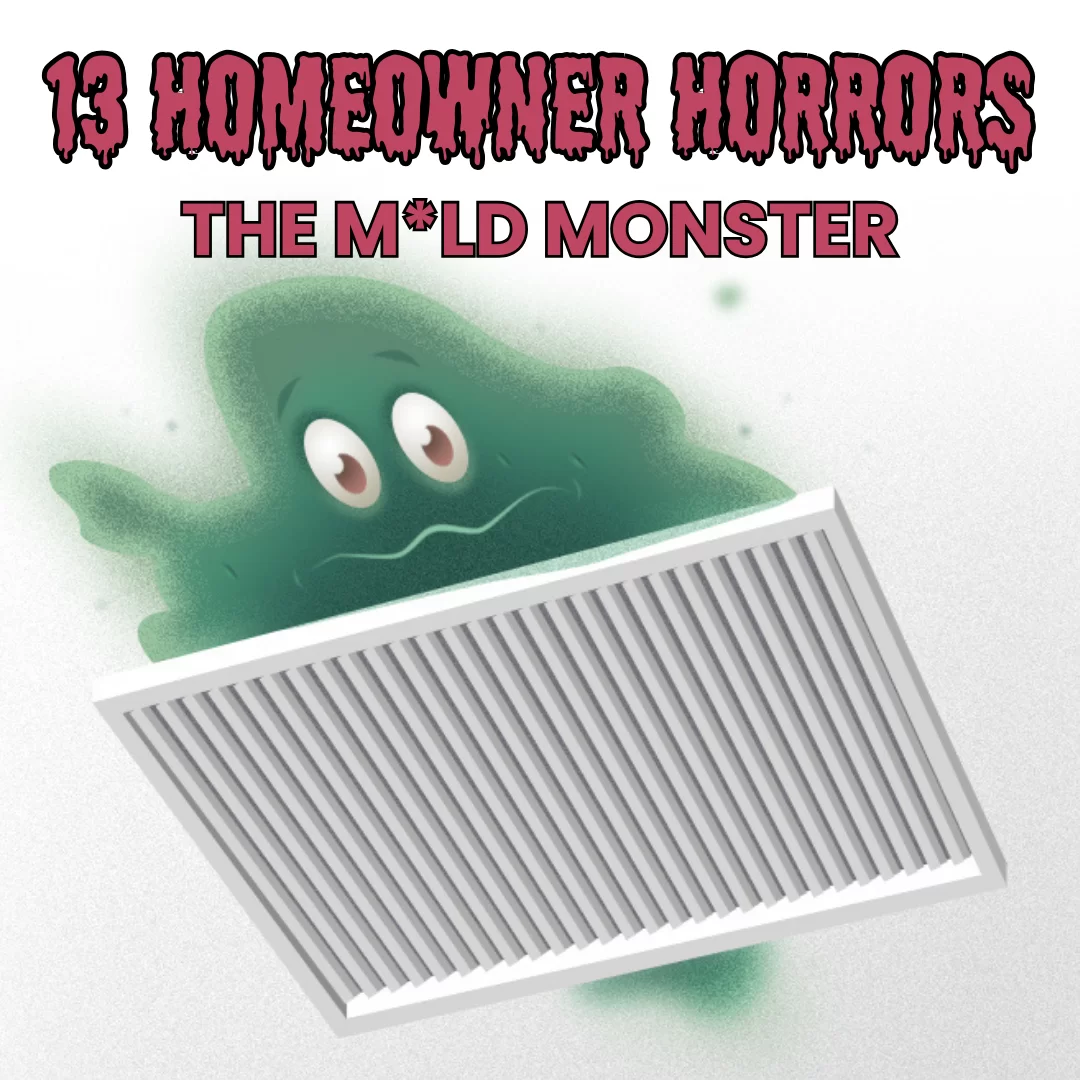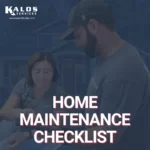Mr. C was a first-time homeowner living on his own in a condo near the beach. Since it was his first time living away from his parents with no rules, he decided to pursue his passion, cooking. He was always boiling water for pasta and poached proteins, and he liked to keep the sliding door to his balcony open.
Mr. C’s condo often felt muggy, but he figured it was something he’d just have to live with if he was cooking, doing dishes, and getting fresh air. His A/C unit ran all the time to keep the place cool, and his vents were wet. He just thought, “That’s just where hot meets cold,” and he shrugged it off.
Over time, black specks started showing up on and around the vent. Mr. C thought it was dust buildup on the wet spots and kept telling himself that he’d take care of it later.
Long story short, “later” became “never,” and his ceiling started looking like someone sprayed it with a blackish-green airbrush. At that point, Mr. C realized he could no longer take care of it and called an HVAC contractor. The HVAC tech said the worst thing a tech could possibly say:
“Sir, you have a moisture problem.”
Only he didn’t say moisture. He said THE word. The big one—the queen mother of dirty words: the M-dash-dash-dash word.
Of course, Mr. C freaked out. How could this happen to him? His ceiling was a little damp, but to have a full-on M*LD problem? That was only something that could happen to a pigsty, right?
Not necessarily…
The HVAC contractor agreed to look around the boot, which is the section of ductwork that meets the vent, and he found that it wasn’t properly sealed to the structure. When the boot isn’t sealed, dusty air can seep in—which potentially has mold spores that will seize any opportunity (read: moist surface) to latch onto and grow. It didn’t have anything to do with Mr. C’s home hygiene (though the moisture surely didn’t help); the real culprit was a gap that allowed dirty, unconditioned air to come into the space and leave dust and spores on the wet surface.
You can reduce the likelihood of fungal growth in your home by:
- Using exhaust fans when bathing, showering, or cooking
- Wiping off wet surfaces
- Making sure your plumbing stays leak-free
- Regularly cleaning fabrics, including bedding and carpets
- Calling a contractor to make sure the areas around vents or recessed lights are sealed
The dreaded “m-word” is a big problem in Florida, especially near the humid coasts and after hurricanes. Ventilation throughout the home is a key player in the prevention of fungal growth, so we recommend calling a contractor to make sure your home is able to get moist air out and keep it out.






